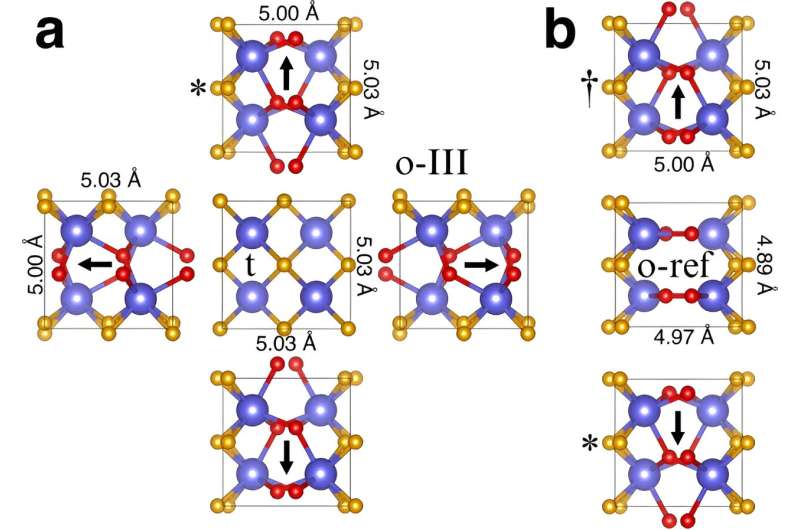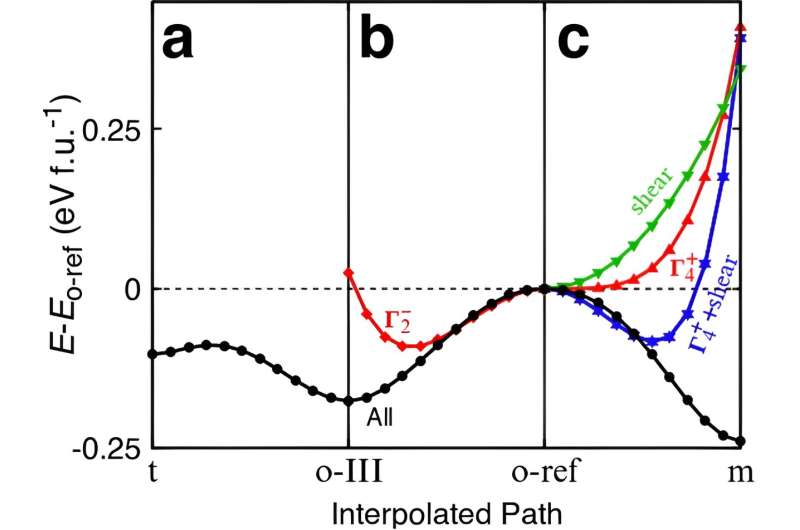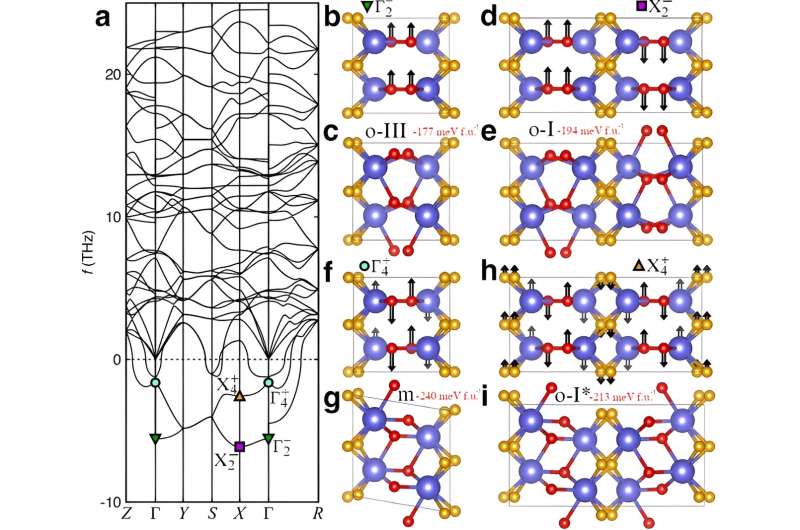November 30, 2023 feature
This article has been reviewed according to Science X's editorial process and policies. Editors have highlighted the following attributes while ensuring the content's credibility:
fact-checked
trusted source
proofread
A theoretical approach to ferroelectricity in hafnia-related materials

Hafnia ferroelectrics are based on their technical promise and remarkable behaviors, where the peculiarities stem from an active extrinsic mechanism that contributes to their properties from a growing number of new intrinsic features.
Due to their unconventional nature, basic questions about the materials remain open. In a new report published in Communications Materials, Hugo Aramberri, Jorge Iniguez, and a team of researchers in materials research, science, and physics in Luxembourg, used first principle simulations to show how adopting an original, high symmetry reference phase led to the development of a mathematically simple, and physically transparent treatment of the ferroelectric state of Hafnia. The work provided deeper revelations of Hafnia ferroelectrics to optimize their properties and induce new properties.
Ferroelectrics and reasons for an alternative approach to hafnia
Hafnia ferroelectrics hold much technical promise and surprising properties due to their nanostructures and tunable piezoresponse. The behavior of such materials remains to be understood; however, a majority of intrinsic and extrinsic factors influence the observed properties. These include intrinsic features of perfect crystals.
Based on first-principles simulations, Aramberri and the team showed the existence of a ferroelectric state and revealed its properties. The ferroelectricity in hafnia shows the ferroelectric phase with four different domains in hafnia samples.
During wake-up cycling, hafnia behaves as a ferroelastic biaxial material that demands a theory based on a tetragonal high-symmetry reference structure. The 'woken-up' hafnia and zirconia samples present a coexistence of phases, including the o-III ferroelastic state, the well-known monoclinic ground state and other orthorhombic polymorphs. Such polymorphs are separated by boundaries of zero width.

The nature of ferroelectricity of Hafnia
Hafnia exhibited features that are typical of ferroelectrics with large coercive fields, and resilience of the polar order at the nanoscale. Researchers had previously noted a strong dielectric anomaly where heating hafnia resulted in a ferroelectric phase transition, much like proper ferroelectrics such as barium titanate with high permissivity.
The density functional theory simulations of barium titanium oxide presented hallmark features of ferroelectricity. The outcomes also shed light on the possible transitions between stable hafnia polymorphs, and variations of its structural detail.
To investigate ferroelectric switching and field-driven transitions in hafnia and zirconia, Aramberri and team constructed a theoretical o-reference state as a starting point to facilitate the reference of all relevant intermediate states.
During the experiments, the team conducted studies using first-principles density functional theory, they computed the polarization using a modern theory of polarization. For symmetry analysis, they used standard web-based crystallographic tools and visualized the structural representations of the structures using X-ray diffraction patterns.

Outlook
In this way, Hugo Aramberri, Jorge Iniguez, and team introduced a theoretical framework to model the functional properties of the most common ferroelectric phase of hafnia and zirconia, which included switching, field-driven transitions, and electromechanical responses.
The team relied on a uniaxial ferroic order that affected many such samples. The scientists discussed the impact of the phenomenon on different treatments, where the outcomes provided a simple but thorough picture of the relevant energy landscape of hafnia and zirconia that naturally connected all low-energy polymorphs.
The proposed reference is an ideal starting point, from theoretical and computational studies to the conception of new experiments and their optimization.
More information: Hugo Aramberri et al, Theoretical approach to ferroelectricity in hafnia and related materials, Communications Materials (2023). DOI: 10.1038/s43246-023-00421-z
© 2023 Science X Network





















